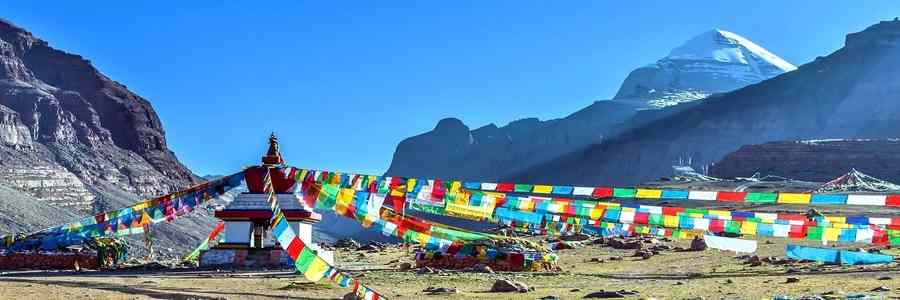CALL: 91-9810098099/91-9911398099 ( Tourism ) Email: info@ntpindiatourism.com


Request call back
Want to Know more about our services?
Provide your contact info & we will call you back.
Date: 14-05-2023
Nepal Tour Operators equest China to remove 'Unpractical Rules' for Kailash Mansarovar Yatra
China lifted the ban on foreigners entering Tibet this year, and the Kailash Mansarovar Yatra—the annual religious pilgrimage— opened for the first time since COVID-19, but with strict regulations for Indians and Nepalese.
As per new regulations, the visa fees for Nepali guides and staff assisting the pilgrims from India and other countries to Tibet and Kailash have increased from $30 to $120. While for permits to acquire a visa, Nepalese will now have to pay $300 while earlier it was $100.
Additionally, another inconvenience for Nepali firms operating tours to Kailash Manasarovar is that they have to deposit $60,000 (8 million Nepali rupees) each to send Indian pilgrims to Tibet.
Nepal’s central bank does not allow Nepali travel agencies to deposit funds in foreign banks. Top tour operators in Nepal —Trekking Agencies Association of Nepal, Nepal Association of Tour and Travel Agents (NATTA) and The Association of Kailash Tour Operators Nepal (AKTON)—have written to the Chinese Ambassador to Nepal Chen Song.
"The Foreign Exchange Centre (FEC) under the Tibet Autonomous Region, the body responsible for issuing permits for Indian pilgrims, has banned Nepali tourism businessmen who oversee Kailash Mansarovar Yatra for Indian pilgrims. We would like to inform you that a mandatory deposit of sixty thousand US dollars (about 8 million Nepalese rupees) has been made for a Nepalese company to handle Indian pilgrims to Kailash Yatra. This arrangement is contrary to the rules and laws of Nepal," the letter by the association, which WION has access to, states.
Meanwhile, for Indians, China has increased the cost of the Kailash tour package to 2,50,000 Indian rupees (US $3,000 approx.) from Rs 1,50,000 (US $1,800 approx.) per person, as per the Tibet Tourism Bureau.
The new rules further state that Indian pilgrims should be in a group of at least five people to obtain visas, and at least four of them should be present physically.
"Now, tourists going to Kailash and Lhasha have to be present for biometrics for applying for a visa. Tourists and Nepali tourism entrepreneurs are now in a dilemma with this unpractical rule," Nepal tour operators said in the letter.
Earlier, Chinese authorities used to collect biometric details at the immigration office at the border points.
The tour operators told WION that permit applications for Indians have not yet begun thus putting the Nepali tourism sector under pressure.
From 2014 to 2019, over 100,000 Indian nationals have been to Manasarovar via Nepal. They bring in both money and work for Nepal’s tourism which thrives even in the lean seasons of May-September, as each tourist spends anywhere between $800 to $1,200 for the week-long trip.
Every year, Nepal receives 40,000 Kailash pilgrims, out of which 30,000 are Indian pilgrims, as per tour operators.
About 10,000 Nepalese are directly benefitted every season from the food and support of Indian and Nepali pilgrims going on the Kailash Yatra.
Nepali operators, who were hoping that the reopening of the northern border would help their businesses to recover, are having to face innumerable difficulties and financial hurdles.
"Thousands of pilgrims used to come to Nepal from India and other countries. The permit applications for Indians have not yet begun. Only foreign passport and Nepali passport holders are allowed. We hope the process begins for Indians too. There are some issues that can only be addressed at the government level. All Indian, China, and Nepal governments will have to solve some border, visa issues. The new restrictions that ask pilgrims to be present physically for biometrics to acquire a visa are I think controlled tourism," Pradip Pandit, Vice President of Trekking Agencies Association of Nepal told WION.
"Due to many restrictions, the flow of tourists will decrease. We have taken this to the Chinese Embassy, Nepal Foreign Ministry, and Prime Minister," he added.
Calling the restrictions impractical, Pandit said, "A single Nepali staff will incur $420 dollars, which is more than their earnings of monthly NPR 25,000 ($190). Even we cannot bear this cost, it is very expensive. We asked our counterparts to change these regulations.
The Chinese government has allowed Kailash pilgrims to go only through Tibet's capital Lhasa and Nepal's Kerung Pass. The main season for Kailash is from May to September every year.
The annual pilgrimage season would be a boom time for the tourism industry, and the government too would see increased revenue from taxes. Religious tourists create good business for hotels and restaurants including travel agents.
However, this year Nepal is not even expecting one-fourth of the pilgrims of what it used to receive earlier.



